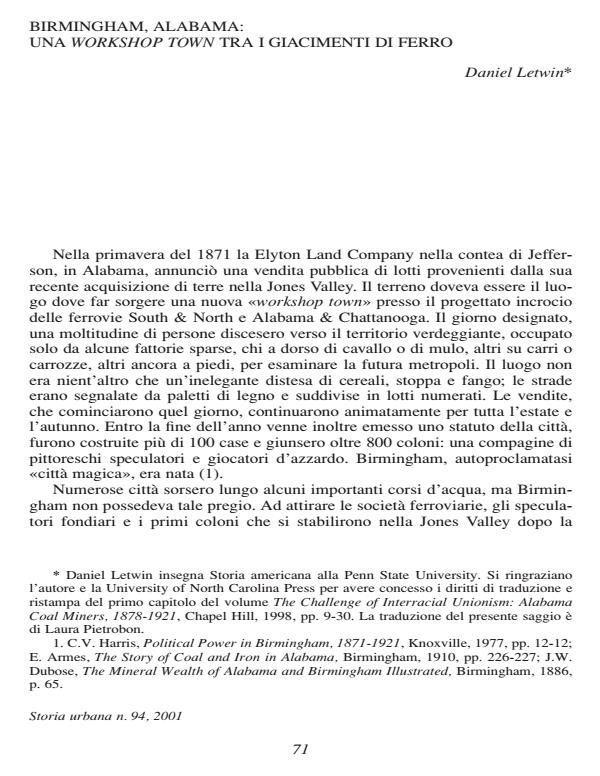Birmingham, Alabama: una workshop town tra i giacimenti di ferro
Journal title STORIA URBANA
Author/s Daniel Letwin
Publishing Year 2002 Issue 2001/94
Language Italian Pages 35 P. File size 139 KB
DOI
DOI is like a bar code for intellectual property: to have more infomation
click here
Below, you can see the article first page
If you want to buy this article in PDF format, you can do it, following the instructions to buy download credits

FrancoAngeli is member of Publishers International Linking Association, Inc (PILA), a not-for-profit association which run the CrossRef service enabling links to and from online scholarly content.
In the spring of 1871 the Elyton Land Company in Alabama announced a public sale of lots in Jones Valley. The land was to be the site of a new «workshop town» at the projected intersection of two important railroads. It was the start of Birmingham, the «magic city» of the South. While most cities emerge along some prominent body of water, Birmingham had no such asset. It was the area’s rich mineral deposits that attracted the railroads, land speculators, and settlers. In the early years the Birmingham district was «a wild country, sparsely populated, and rough in appearance» but in the age of industrialization, the sheer abundance of coal, iron, and limestone was enough to fuel a continuing faith in the city’s future as the «Pittsburgh of the South». In this work, Daniel Letwin brilliantly tells us the changing of the land from a valley «beautifully diversified by fields and forest, spring and running stream» to «the manufacturing center of the habitable globe». In this process the major role was played by African American skilled workers. This essay is reprinted from the first chapter of Daniel Letwin’s book The Challenge of Interracial Unionism: Alabama Coal Miners, 1878-1921, University of North Carolina Press, Chapel Hill, 1998, pp. 9-30.
Daniel Letwin, Birmingham, Alabama: una workshop town tra i giacimenti di ferro in "STORIA URBANA " 94/2001, pp , DOI: